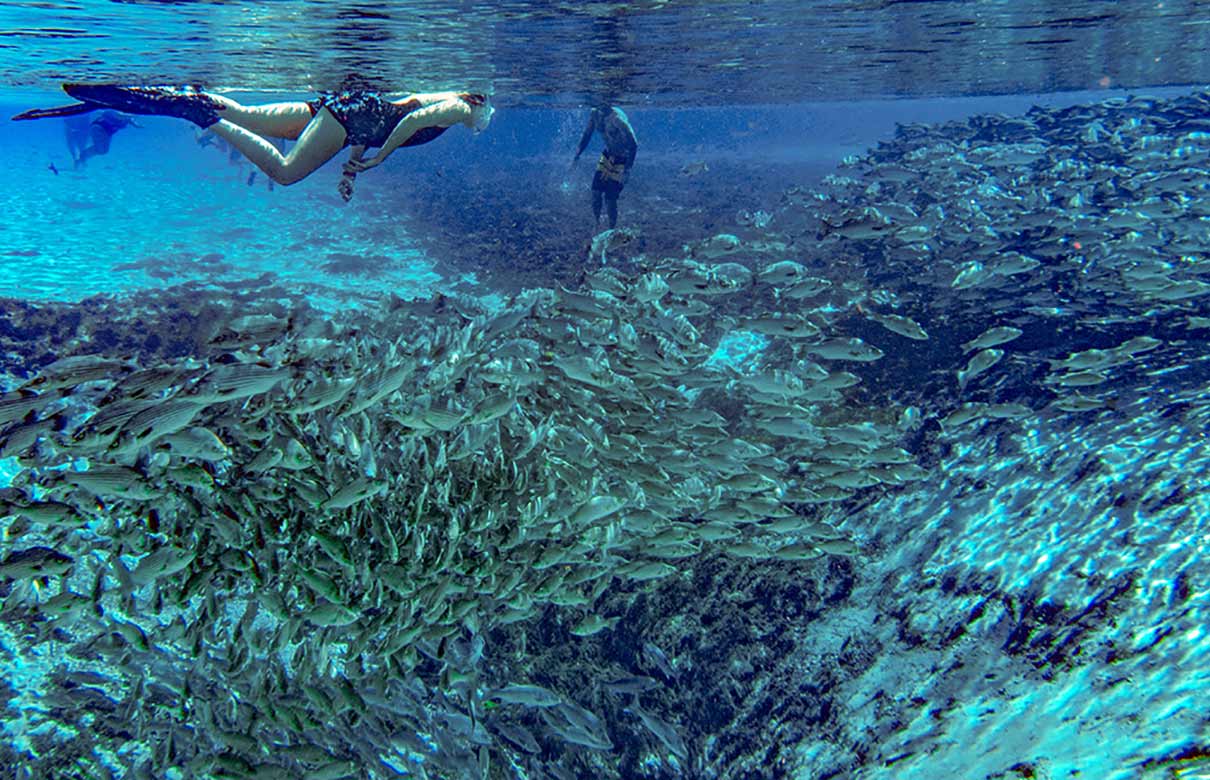The Heart of All Florida Waters
By: David Conway
 Divers marvel at the striped bass and hybrids at Silver Glen Springs. (Photo courtesy of FloridaSportsman.com)
Divers marvel at the striped bass and hybrids at Silver Glen Springs. (Photo courtesy of FloridaSportsman.com)
When we talk about the health of Florida’s springs, we’re talking about a lot more than a chance for a great day swimming and diving in a clear, freshwater pool. We’re actually talking about the health of all Florida waters (including our drinking water) and the quality of fishing in our estuaries and along our coasts. As Lisa Rinaman, St. Johns Riverkeeper says, all Florida waters are connected. The springs are their pumping heart.
Though a lot of people – 15 to 20 million a year in fact – visit Florida springs, generating as much as 1 billion dollars in direct annual revenue – it’s much harder to see the connection between springs and the rich river and coastal fishing that we have unless you speak with the scientists who study these ecosystems and the anglers who live on them.
First, a few facts for people like me who don’t know as much about Florida’s amazing network of springs as they might like. Bob Knight, founder and director of the Howard T. Odum Florida Springs Institute in High Springs filled me in.
Florida’s got the largest number of springs of any region in the world and they’re artesian springs. These are powered by the pressure of the underground aquifer, called the Floridan aquifer, which stretches 100,000 square miles wide across all Florida, portions of Georgia and other Southeastern states. It’s formed of ancient limestone beneath the ocean, a giant water storage tank of fresh water, riddled with caves, some with openings up to the surface, which creates a spring. In the Southeastern U.S., about 12 to 15 billion gallons of rainwater a day recharges these springs, which so many species, and many of our rivers depend upon for their life.
READ THE FULL STORY ON FLORIDA SPORTSMAN